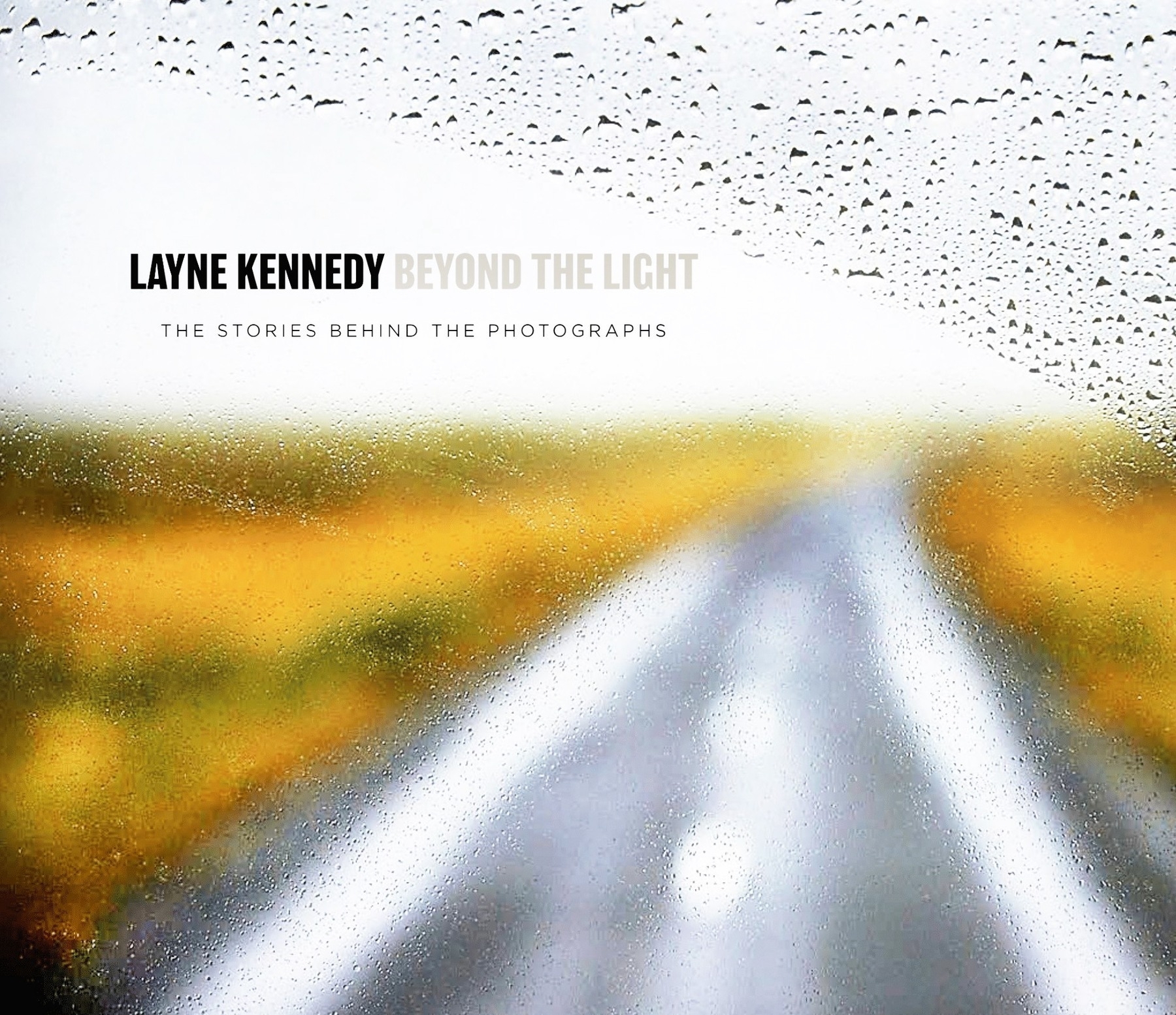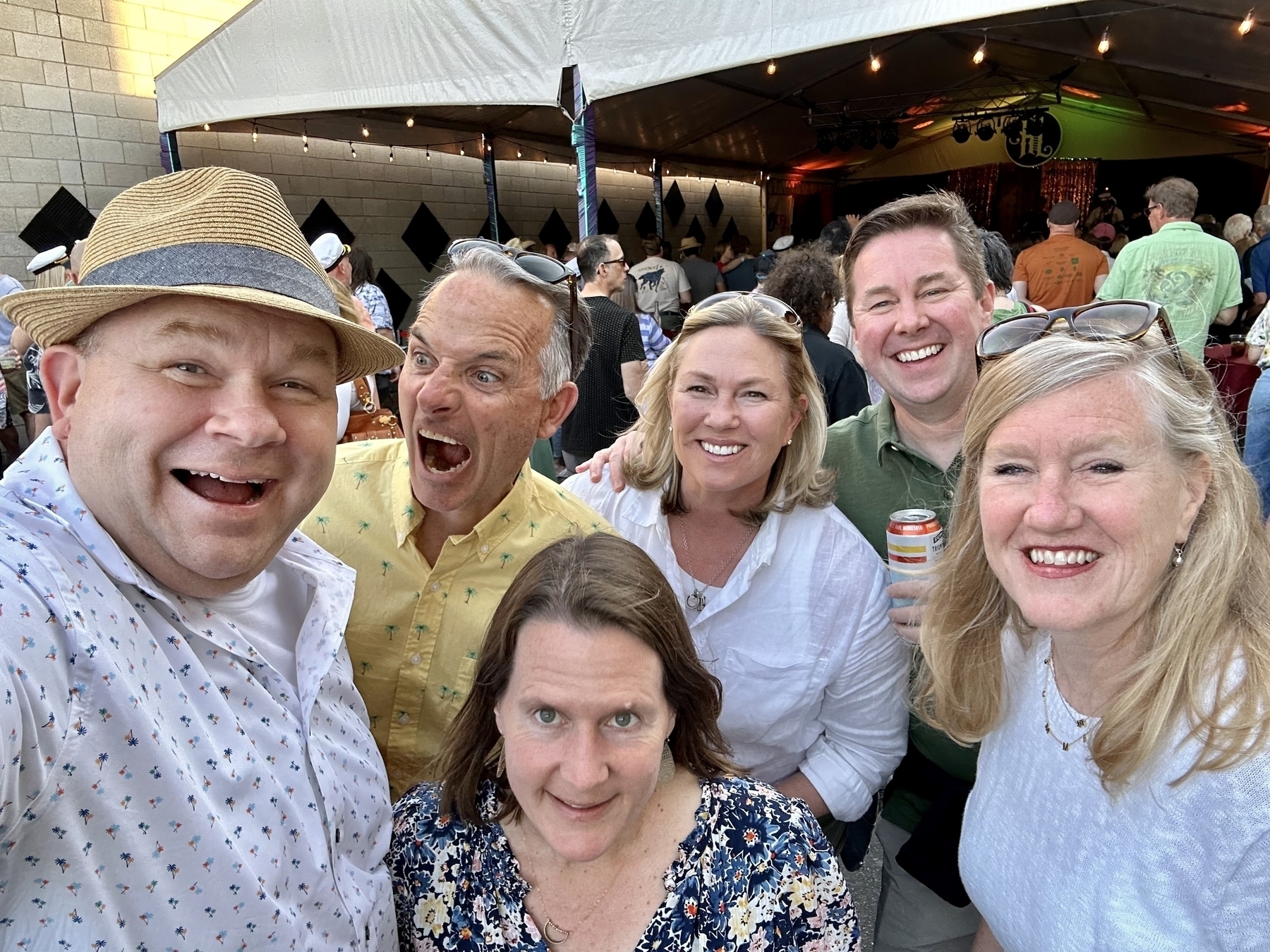Weekly Thing #257 / Nostr, Time, Bcrypt
Weekly Thing #257: Layne Kennedy's new book, Nostr's unique capabilities & micropayments, reflections on Snowden revelations, and more.
I’m Jamie Thingelstad, and this is the Weekly Thing. One of the delights of sending this email is hearing from you! Hit reply and say Hi…
Good morning, err, or afternoon? ☕️
Summer has started with a bang! 💥
Memorial Day. Last days of school. Birthdays! Graduations?! 🎓
Hold on! 🚀
My friend Layne Kennedy launched a Kickstarter for his new book Beyond the Light. I met Layne when Tammy signed me up for a Dog Sledding Photography workshop in 2009. Layne is an incredible photographer, creator, and teacher.
This new book sounds wonderful and I’ve heard Layne share a bit about it along the way. I can’t wait to see the final version!
They speak to us about the power of connection, the place of beauty in our lives, and the strength that comes from deep within us all.
They go beyond the light,.
That is why, after 40 years of searching out these images, wherever they are found — from my own backyard to locations across the world — I am bringing a curated collection of these photographs and the stories behind them, together in a new, high-quality collector’s edition book; BEYOND THE LIGHT: The Stories Behind The Photographs.
I still routinely hear Layne’s words when I look through the viewfinder.
“Every photo tells a story. What is the story you are telling?”
True for many things beyond photography too…
The project is already about 70% of the goal! 🎉
Back it now to get your signed edition and support distributing copies to libraries as well!

Featured
Meet @Fiatjaf, The Mysterious Nostr Creator Who Has Lured 18 Million Users And $5 Million From Jack Dorsey
This writeup on Nostr and the key folks behind it is a good backgrounder. I’ve been playing with Nostr for a few weeks and it has some interesting capabilities. Micro.blog recently added syndication support for Nostr as well, which I turned on. Nostr feels much more like using a protocol than using a specific service. It feels more like SMTP or HTTP than Twitter. The work and experience is up to the client, and using a client like Damus feels a lot like Twitter with some unique twists due to the decentralized nature. For example, you don’t really know who or how many people follow you. Just like the Web. You publish, and others read.
The addition of micropayments via Zaps is very interesting as well.
it has developed a secret weapon: the ability to transfer bitcoin among users. Already 500,000 daily Nostr users have sent each other 792,000 tiny bitcoin transactions called zaps, worth $1.9 million, with dozens of companies building new applications.
The problem for most (all?) protocols is that economics are ignored and that usually means at the end you have to shrug and surveil people for advertising. A robust, friction-free and global micropayments system built on Bitcoin and Lightning is well integrated into Nostr as Zaps. I’ve sent and received a bunch of Zaps. This is truly novel amongst similar protocols and has the potential to create an economically viable protocol that doesn’t need external support, as well as introducing an intentionally limited asset into the system to better validate activity as not-spam and importance.
Before the year was over @Fiatjaf’s ideas had matured into what he calls the Nostr Manifesto, describing an open, censorship-resistant global social network. Computers that send short messages to each other and comprise the lowest layer of the network are called relays. Applications, like a social network or a marketplace built on top of the relays are called clients. Instead of the public key identifying a token like bitcoin it defines a user, and there is no underlying blockchain. Nostr is just a series of instructions for how to build interoperable applications.
This again reinforces the protocol aspect. Nostr can power a wide variety of applications.
But in April 2022 a slow trickle of new users became a downpour. Bitcoin engineer, William Casarin, 34, launched Vancouver, British Columbia-based Damus (as in Nostr-damus) on the Nostr protocol. Initially, it was a weekend project that simplified accessing Nostr in a Twitter-like environment. He incorporated Damus at the end of 2022, and in January, Apple admitted Damus to its App Store. Casarin, who previously worked at bitcoin infrastructure firm Blockstream devised a way for Nostr users to send the tiny bitcoin payments called zaps via the Lightning network. Shortly thereafter, @Fiatjaf added Casarin’s upgrade to the Nostr protocol, letting anyone build to the same specifications.
I met Will at Bitcoin 2023 after the Nostr session. Damus is for sure one of the most user friendly experiences on Nostr. Pair it with a Lightning wallet for micropayments and you have a great way to experience how this works.
Reflections on Ten Years Past The Snowden Revelations
Interesting post from the IETF reflecting on learning of the last ten years since Edward Snowden leaked documents on the NSA surveillance programs.
Now that some years have past, it seems appropriate to reflect on that period of time, what effect the community’s actions had, where security has improved, how the threat surface has evolved, what areas haven’t improved, and where the community might invest future efforts.
Bruce Schneier begins this compendium of individual essays by bringing us back to 2013, recalling how it was for him and others to report what was happening, and the mindset of those involved. Next, Stephen Farrell reviews the technical community’s reactions, technical advances, and where threats remain. Then Farzaneh Badii discusses the impact of those advances – or lack thereof – on human rights. Finally Steven M. Bellovin puts the Snowden revelations into an ever-evolving historical context of secrets and secret stealing that spans centuries, closing with some suggestions for IETF.
This reads like four different articles (blog posts?) put together into one paper with sections. I found section 5, the article from Bellovin on Governments and Cryptography the most interesting.
Strong cryptography was here to stay, and it was no longer an American monopoly, if indeed it ever was. The Information Assurance Directorate of the NSA, the part of the agency that is supposed to protect U.S. data, was pleased by the spread of strong cryptography. When the Advanced Encryption Standard (AES) competition was held, there were no allegations of malign NSA interference; in fact, the winning entry was devised by two Europeans, Joan Daemen and Vincent Rijmen. But the NSA and its SIGINT needs did not go away—the agency merely adopted other techniques.
Also would agree strongly with the point in section 3 by Farrell:
In particular, we (the technical community) haven’t done nearly as good a job at countering surveillance capitalism which has exploded in the last decade.
Interesting perspective from an important body, the IETF. Themes on encryption echo my comments in Polarizing Technology.

View over the cheering and flags of the supporters section at Allianz Field. ⚽️
May 27, 2023 at 7:38 PM
Allianz Field, St. Paul, Minnesota
Notable
ENS for your community - matoken.eth
The new ENS v3 Name Wrapper opens up a number of interesting use cases. Issuing subnames to your community is wildly interesting. Imagine when you register for a service you received an NFT that represents your user profile, and it is a subname of the entity itself.
Solo stakers: The backbone of Ethereum — Rated blog
Not all stakers in a proof-of-stake network are the same. This analysis tries to determine how many of the Ethereum Beacon chain stakers are solo stakers. These stakers are the most resilient and decentralized. They don’t operate as a block. Many stake-at-home on their own hardware. I have been doing this on Gnosis Chain for nearly a year now. I think chains should consider how validator rewards are given to incentivize more solo stakers.
What not to share with ChatGPT if you use it for work | Mashable
Most notable thing in this article is the option to turn off your chat history and training. The vectors described are less novel than one might think.
- OpenAI could get hacked and their logs revealed, so be careful that you don’t put overly sensitive stuff in the chats that could be exposed.
- LLMs (and even simpler AI systems) tend to have people overshare sensitive personal information.
- Yes, your conversations may be used for future training of models and that is a good reason to opt-out by turning that feature off.
Noted.
Japan Goes All In: Copyright Doesn’t Apply To AI Training
The US court system is still working through this matter but it is interesting to see Japan rule this way. All in, I think this is the way I feel it should be. Yes AI models are trained on existing examples in any domain, but so are people. No poet become a poet without reading other poets. No painter learns to paint without observing and learning from other painters. What is it about a Neural Network or Transformer Network that says you can’t do the same?
How Leaders Manage Time & Attention - Allen Pike
Super interesting mini-research report from Pike specifically focusing on leaders use of productivity methods. I would share Pike’s surprise at how popular a single “Long-Ass Note” is. Tammy uses a “Long-Ass Note” and I’m always nudging about ways to do that “better”. Her approach seems more common than mine. No real strong message around GTD here, other than concerns of overwhelm.
It doesn’t surprise me that he found a love of time blocking. I think the positive aspects of time created for tasks is real, I use that myself. But I also think Pike doesn’t highlight enough how critical it is to defensively block out some time. As a manager, your time will all get consumed if you leave it open. All of it. If you don’t protect some time for what you need to get done, you will be crushed. Time blocking can do a bit of both.
Lightning Tip Cards
Bitcoin Lightning enables all sorts of cool micropayment, friction-free use cases. With Tip Cards you can print out cards that have a standard QR code on it, lead the card with $1 or 50 cents, and give it to anyone for them to have. I’m definitely going to play with some of these.
Discord Admins Hacked by Malicious Bookmarks – Krebs on Security
Complicated and nasty attack pattern against Discord communities. Discord is like the bar in Star Wars. You need to be extra, extra careful anytime you are in a Discord group. Trust nothing.
Bcrypt at 25: A Retrospective on Password Security | USENIX
Interesting read on various ways to secure password hashes and how Bcrypt has stayed relevant for an incredible 25 years. I found this bit about the design intentionally making it more difficult to use GPU methods interesting.
We designed the adaptable work factor in bcrypt, primarily to keep pace with increasing CPU performance, but also included factors to make it more robust against custom ASICs or GPU acceleration, e.g. by heavily relying on instructions that generic CPUs execute efficiently. A crucial aspect of bcrypt’s resistance to GPU optimization lies in its memory access pattern spanning 4KB during the key setup phase, which is inefficient to parallelize on GPUs with small L1 caches (Malvoni et al., 2014). That said, NVidia increased the L1 cache significantly to 16MB for the RTX 4090 and bcrypt’s 4KB is a tiny amount of memory these days.
Good passwords with a good hash and a strong second factor are pretty hard to get by, even today.
All the Hard Stuff Nobody Talks About when Building Products with LLMs | Honeycomb
Good set of challenges enumerated by the Honeycomb team trying to use an LLM to generate the complicated input into their query engine. I found this call out particularly worth remembering:
Unless you’re literally in the business of selling LLMs, an LLM isn’t a product! It’s an engine for features.
Don’t start with the LLM, start with the problem you are solving for your user.
Microtiming in a Riff from Metallica’s “Master of Puppets” – Metal In Theory
First, “Master of Puppets” is an awesome song. One of my all-time favorites. I didn’t realize that it had this complicated timing. I love when folks go deep on something that they really are into.
As you can see, Metallica’s timing keeps pretty consistently to .15 seconds for an eighth note and .29 seconds for a quarter (or two eighth notes), except for the middle of the 5/8 measure. After the first three eighth notes of this measure, you can hear a brief pause before the last two eighth notes, a pause which is almost always .04 or .05 seconds (about a third of an eighth note), and which makes the measurement of these two eighth notes grouped together .34 or .35 seconds. What makes this rhythmic idiosyncracy different from what has been studied by most music theorists is that this slightly attenuated beat is performed by the whole ensemble in unison, and it’s not a delay that is “made up for” right afterwards. In other words, it’s not a local deviation from the beat that maintains the pulse over a longer span of music, but a permanent shift of where the beat occurs.
And what is the result?
This kind of visceral reaction entirely depends on the “inexact” timing Metallica uses, and the way it upsets with the movement of my headbanging body, for its effect.
Yes! 🤘
AI Canon | Andreessen Horowitz
A16z collected this large collection of articles to give an overall primer on a variety of topics in AI. Including:
- Introduction
- Foundational learning
- Tech deep dive
- Practical guides to building with LLMs
- Market analysis
- Landmark research results
There is a lot here. It is similar to the Crypto Canon and NFT Canon they have published before.
cf #63: being mindful of vanity metrics
Some of these vanity metrics overlap with what I’ve referred to as “analytics as addiction”. Follower counts and retweets fall in here. Frankly the majority of web analytics do as well.
Vanity metrics emphasise scale and might inspire awe and envy—but they don’t reveal anything useful about the ongoing health of a system, and might even obscure its underlying problems.
Good questions to ask via Elezea.
Journal
Need a reason to get donuts? 🍩 Tomorrow is National Donut Day and #TeamSPS is enjoying a day early this year! First Donut Day since the pandemic. See also: 2018 Donut Day.

Today micro.blog added cross-posting support for Nostr! I’ve been having fun playing with Nostr using Damus as the client. Now I’ll be able to syndicate my blog posts to my Nostr profile as well. 🎉
First round of Smashburgers on the flat top for 2023! 🍔🍔🍔

Move along quickly under the broken tree hanging across the bike trail. 🤞

Great day for a family bike ride to Dairy Queen! 🍦


We are UNITED!

Levi and Tyler ran around after the Minnesota United game and collected signatures from: Bongokuhle Hlongwane (21), Sang Bin Jeong (11), Kervin Arriaga (33), and Joseph Rosales (8). They had an awesome time and the players were great! 👏⚽️


M - N - UFC! Come on you Loons! Minnesota United FC v Real Salt Lake tonight. ⚽️

First visit to Pleasant Grove Pizza Farm for 2023! Delicious and great vibes. 🍕🤩



Pool is open for the summer! 💦

At the Hook and Ladder with friends for Summer Breeze Yacht Rock Fest featuring The Lonesome Losers. 🎶


I now have a Bluesky Social account (thanks @maique for the invite!) and with micro.blog syndication anything I post on my blog will appear there too. Curious to explore Bluesky and see what it does well.
Briefly
Simple Python library to send events to Nostr. Reminds me of how easy it used to be to write simple bots for Twitter. → python-nostr: A Python library for Nostr
Simple utility to make an RSS feed from a variety of Nostr queries. → RSS for Nostr | Nostr.Band
I was bummed to hear that Neeva was shutting down, and then they said they were pivoting to AI, and just a week later they are now sold to Snowflake. I didn’t have that on my BINGO card for them. Also, Snowflake’s Frank Slootman: Generative AI Disruption, Obsolescence. → Snowflake acquisition of Neeva to add generative AI | TechTarget
Wild stuff when a wallet is idle for 8 years and then moves 8,000 ETH ($14.7M USD) to a new address. The original purchase was made for $2,500 USD when ETH was trading at $0.31. $2,500 to $14.7M. 😳 → Another dormant Ethereum wallet reawakens after 8 years, moving millions
This just seems fun and maybe useful to me. 🙂 → Safety Sign Generator
Super fun read about all the various organizations that determine very accurately what the time is. 🕰️ → Where does my computer get the time from? – Tony Finch
Lua is still on my “Someday, Maybe” list as a language to do something fun with. → Lua: The Little Language That Could
Buying others while fending off being bought themselves. → Stratasys to Acquire Fellow 3D Printing Company in $1.8B Deal
Interesting chat app that takes privacy even further by having no user IDs at all. I created a profile to try it out. This must be one of the most secure and private messenger solution. → SimpleX Chat: private and secure messenger without any user IDs (not even random)
Handy little utility to give you superior video embed code for various services. I want to go back and upgrade the embeds on my blog with this. 🪄 → Embed Responsively
Signature
“Weekly Thing #257 / Nostr, Time, Bcrypt” is signed… ✍️
Signed by thingelstad.eth: 0x9119c04cc5035aae560b94f92a56ba09605661acd19705f4bedfb897b208eacf74cc7605915dbb0e4a1e3017d1d6457afd8ac1ab3dd1dd9f4e14a0768a4a7ecb1b
Signed by weeklything.eth: 0x974643015a627a755842e8b842769edea5d23716793d826abbd4ba2921cfa734156beeda9f0fcd4bf5fff2773466784458fa4a4686b7d48234a4eb39e1d826f91b
Fortune
Don’t feed the bats tonight. 🦇
Recent Issues
- Weekly Thing #2^8 / Bitcoin, Kagi, Brink
- Weekly Thing #255 / Lassie, Vore, Alby
- Weekly Thing #254 / Redis, Dooce, Batteries
- Weekly Thing #253 / Domains, Anybox, Currl
- Weekly Thing #252 / Elevator, Evidence, Everything
About
I once created a fun travel game about identifying mathematical relationships in the numbers that appear on road signs, called Road Sign Math! I launched a website to share the signs and had 30 people submit over 250 road signs from every continent in the world!
Thank you for subscribing to the Weekly Thing!